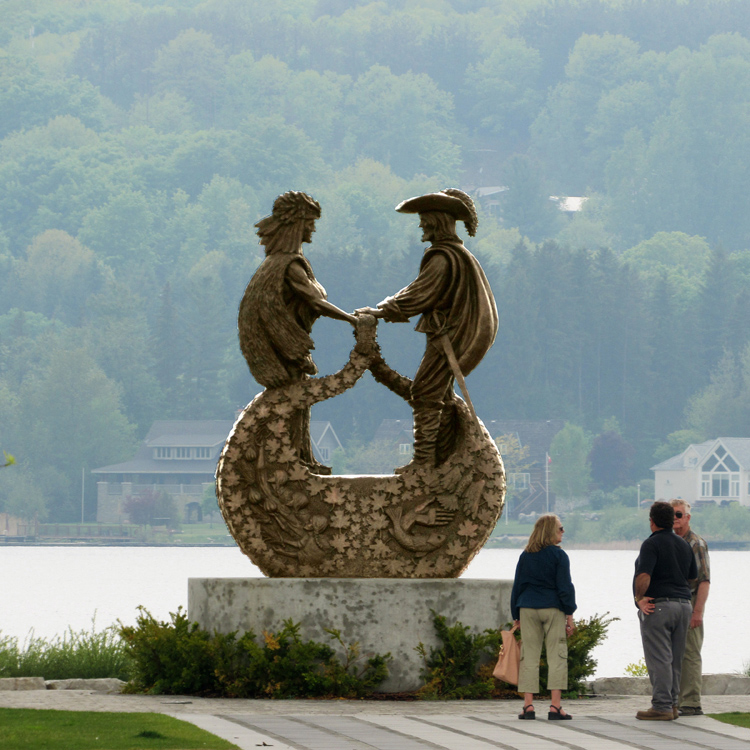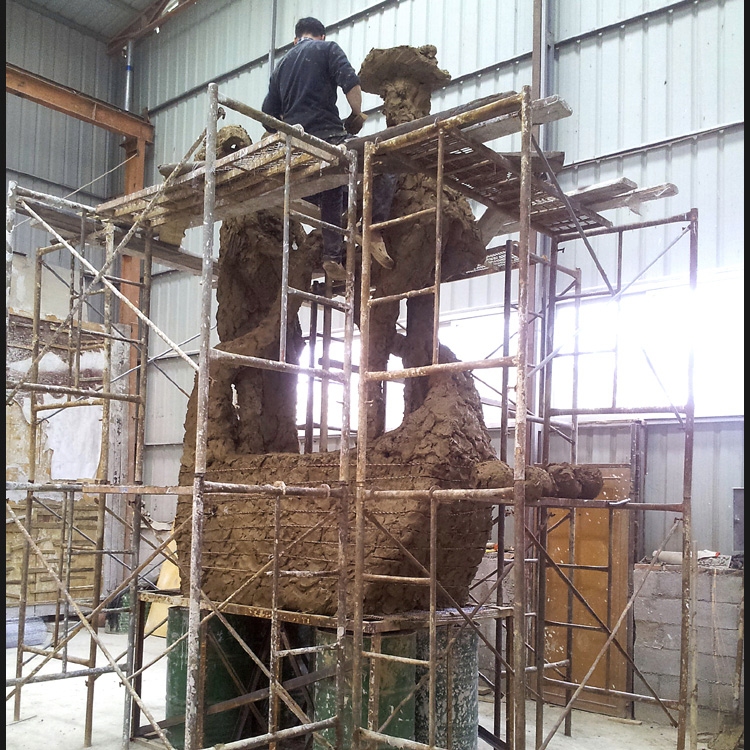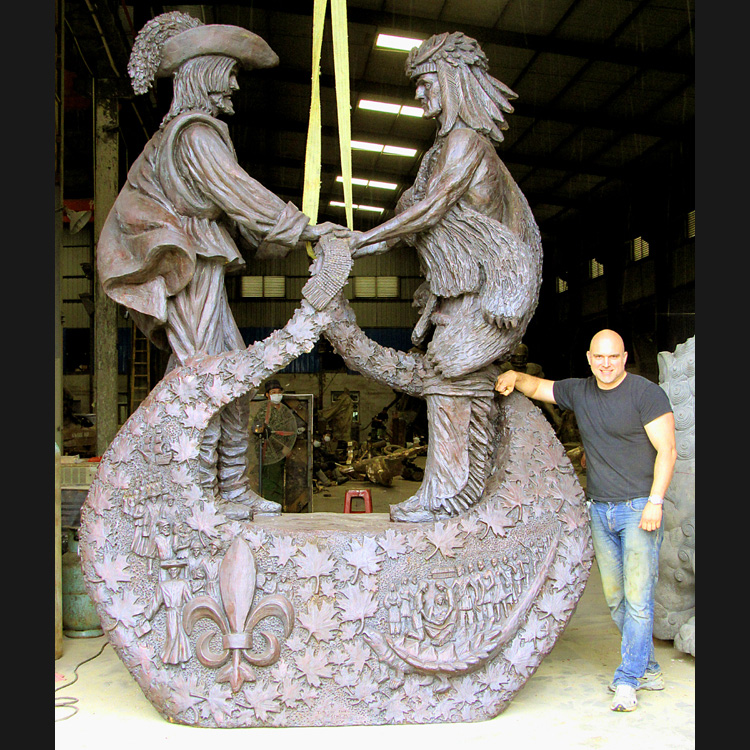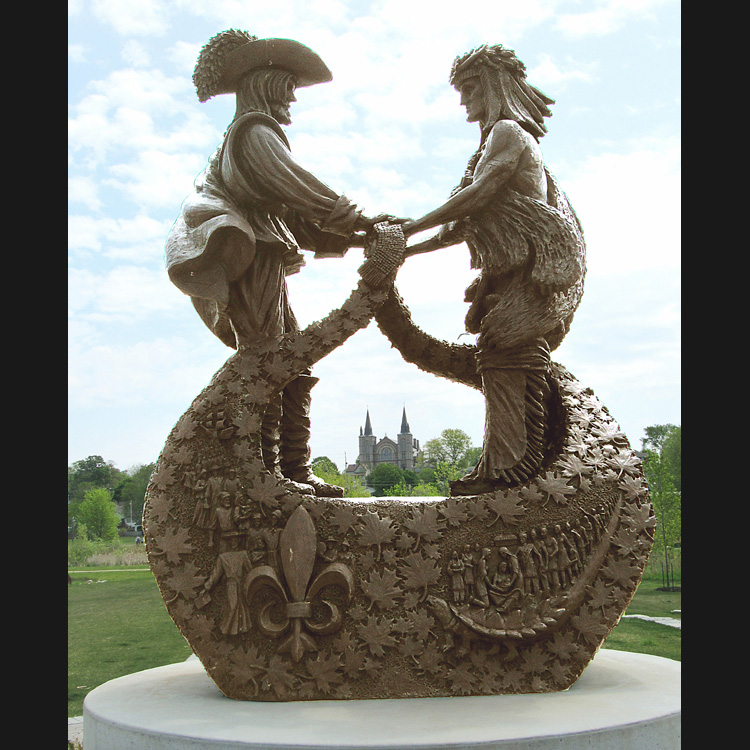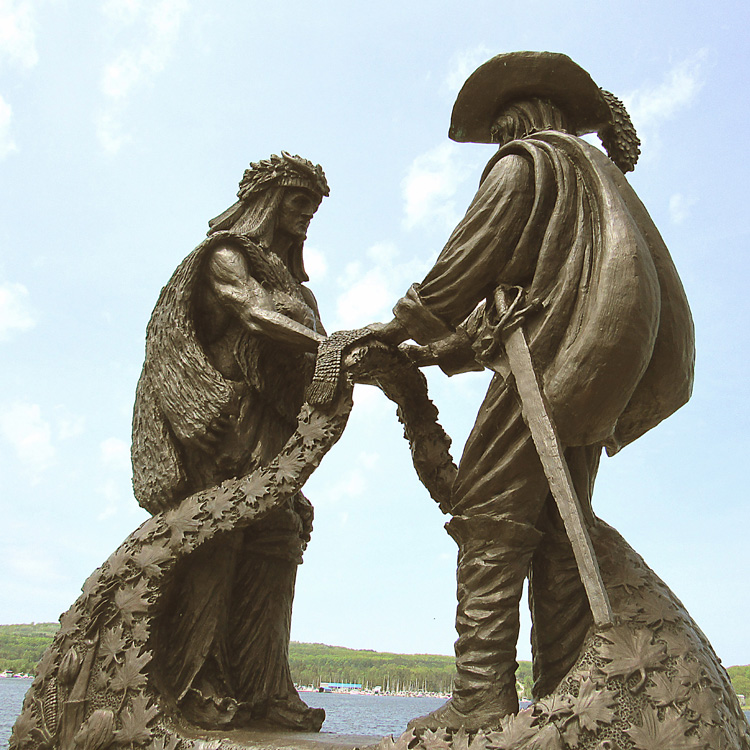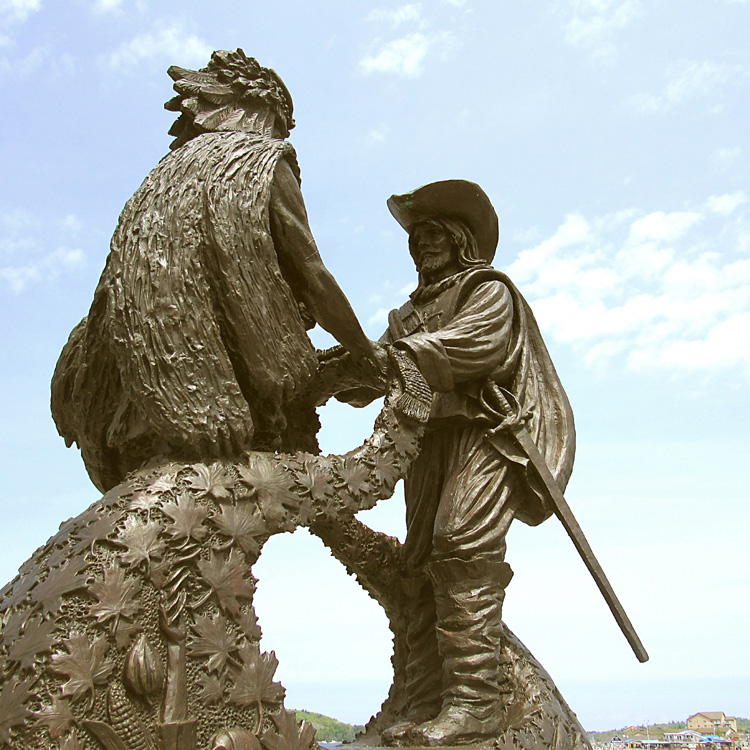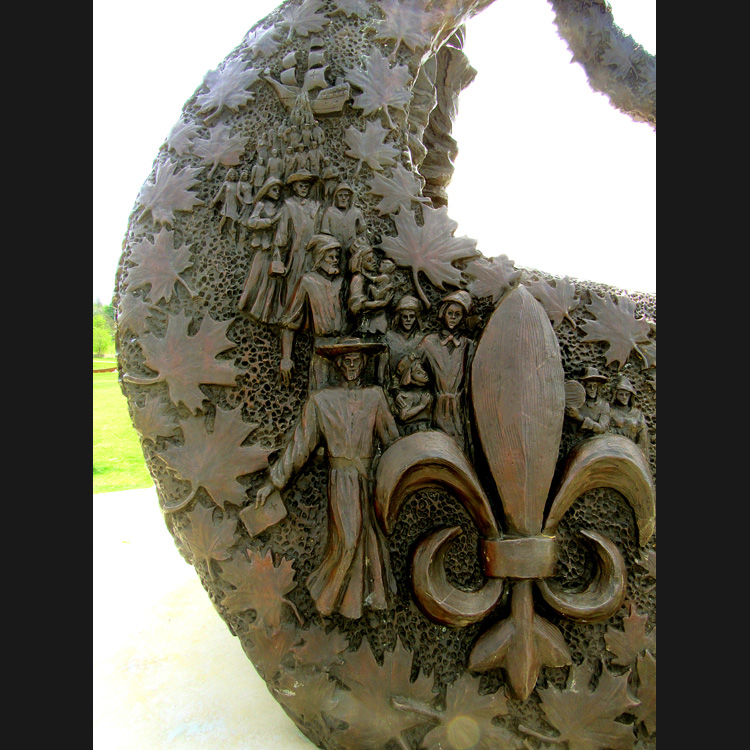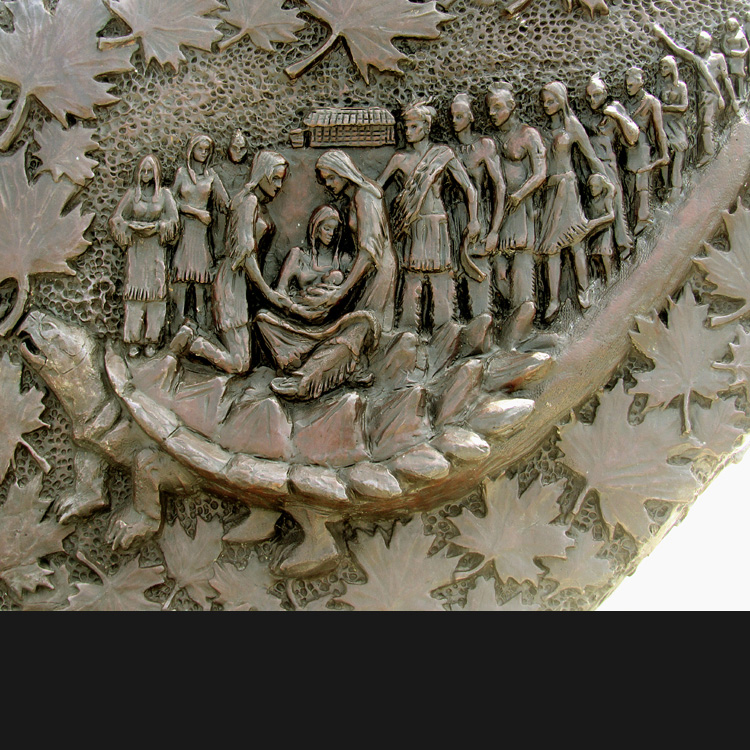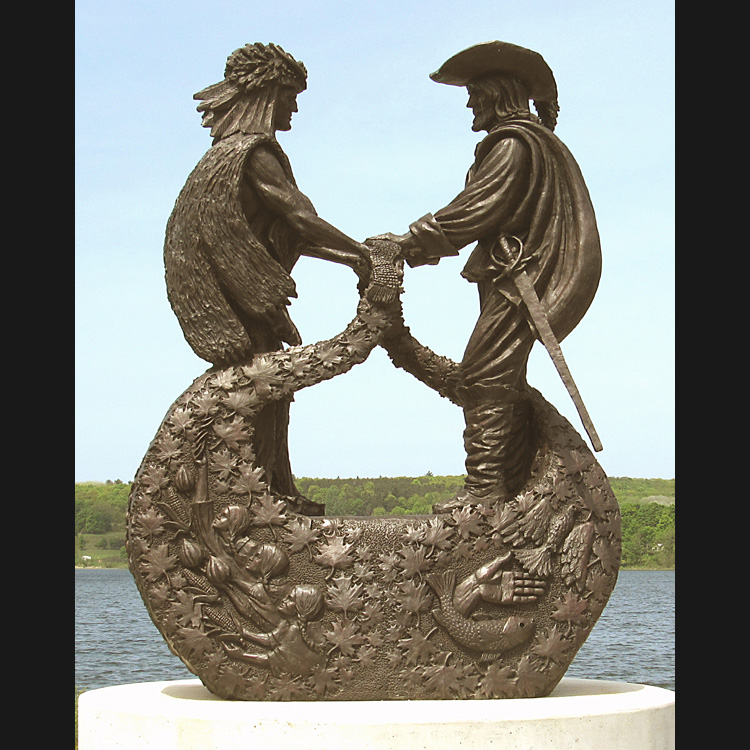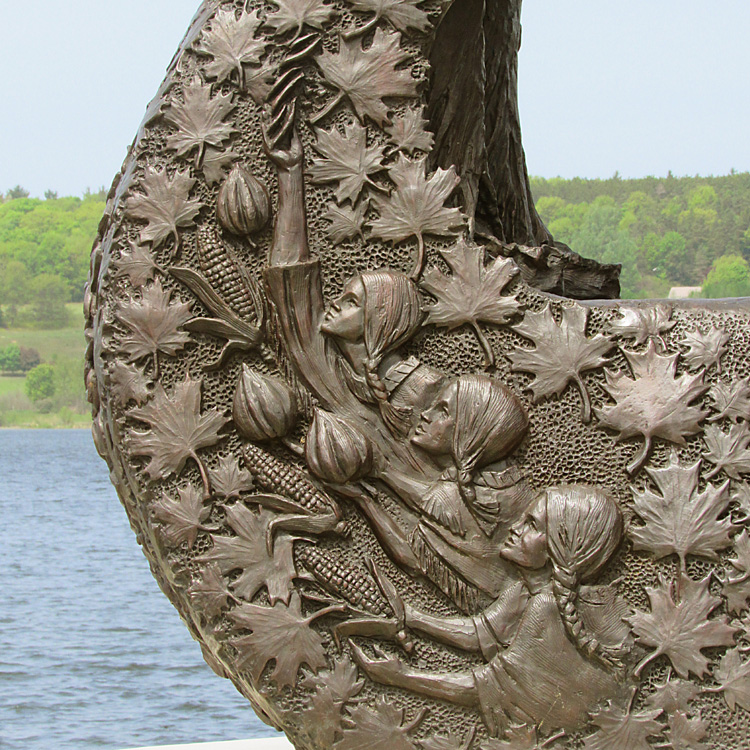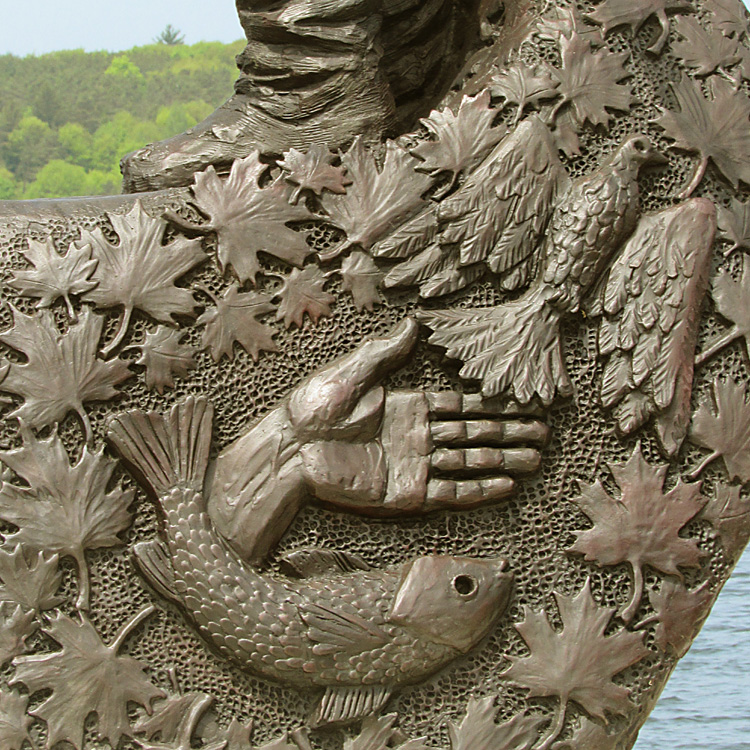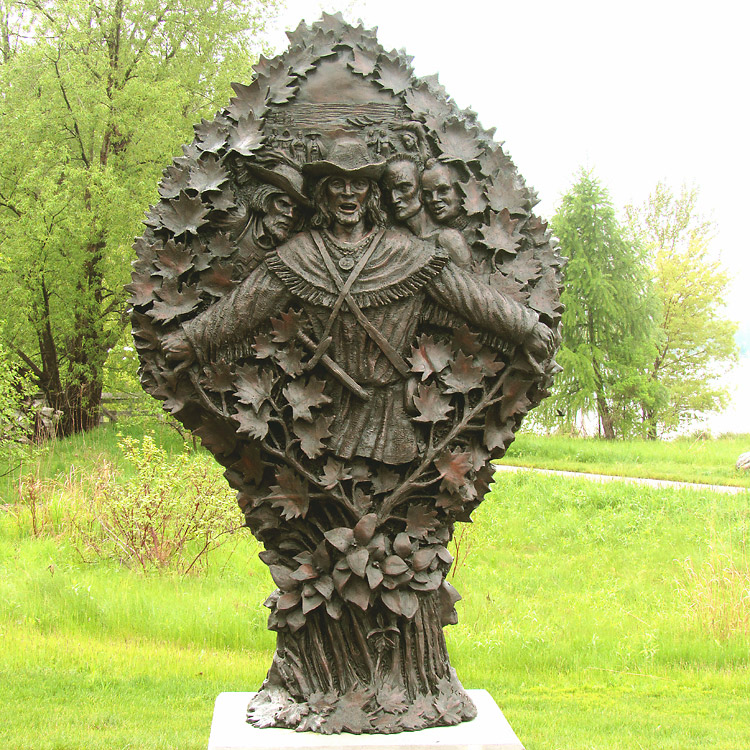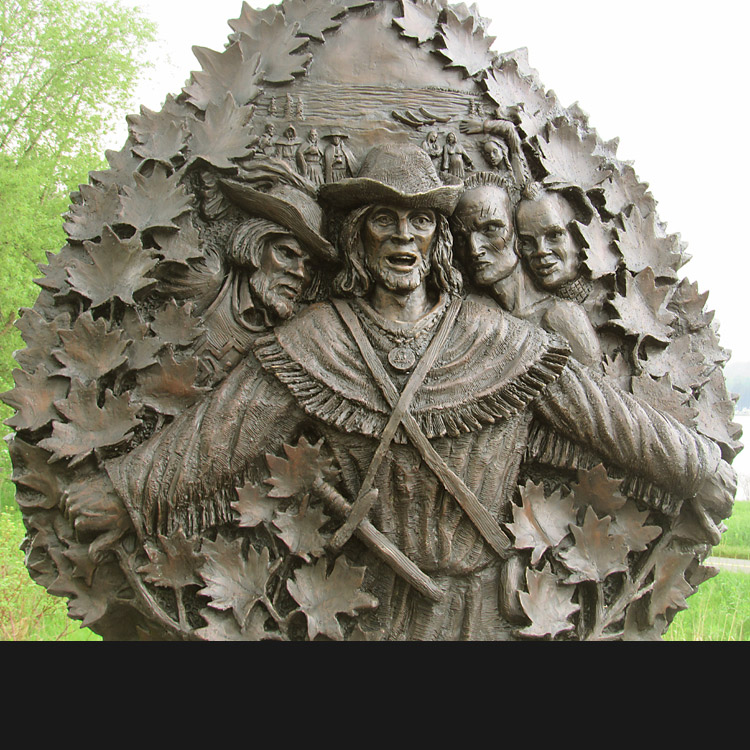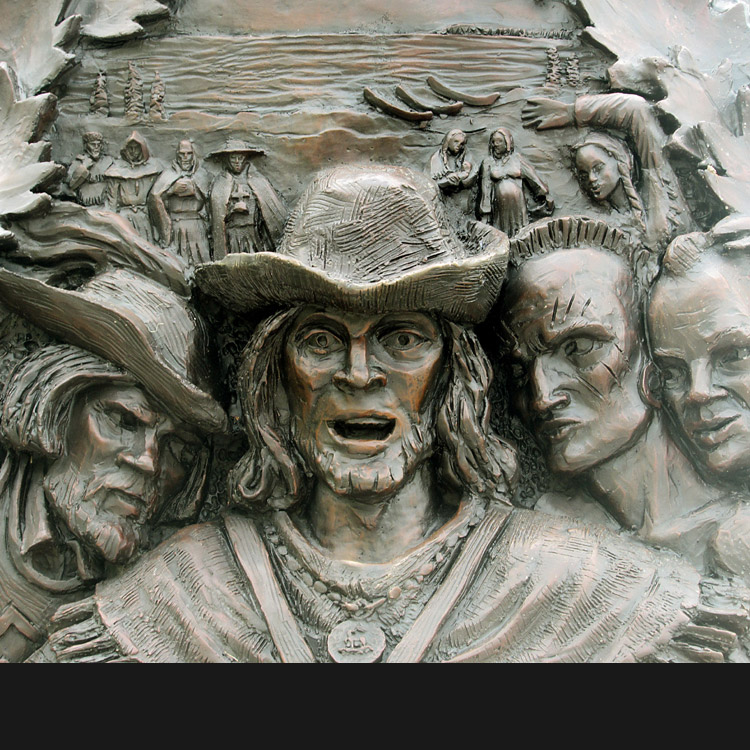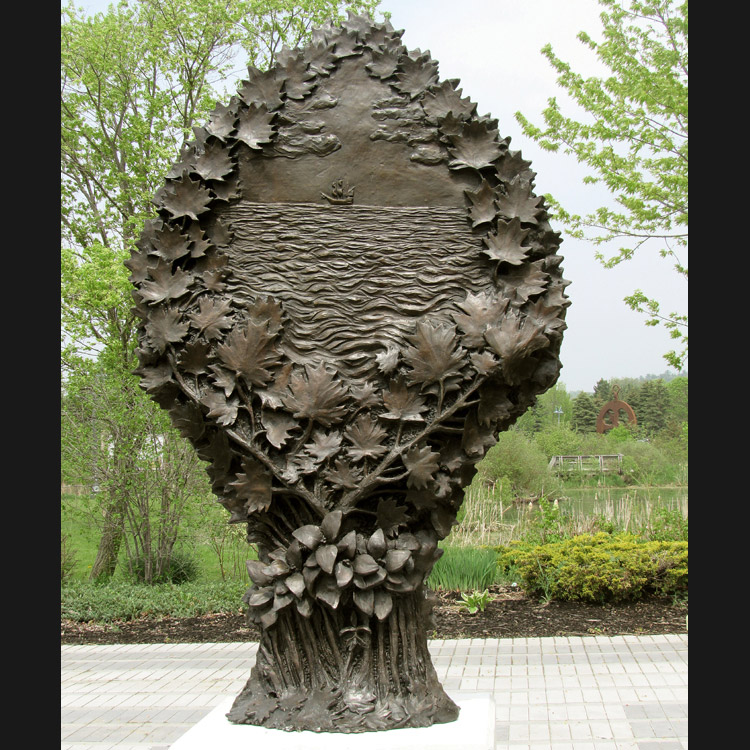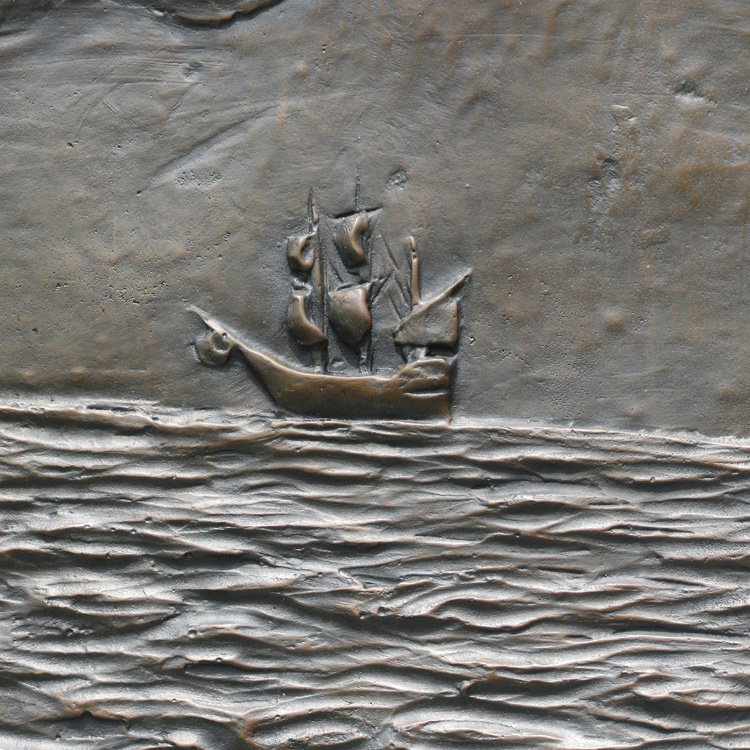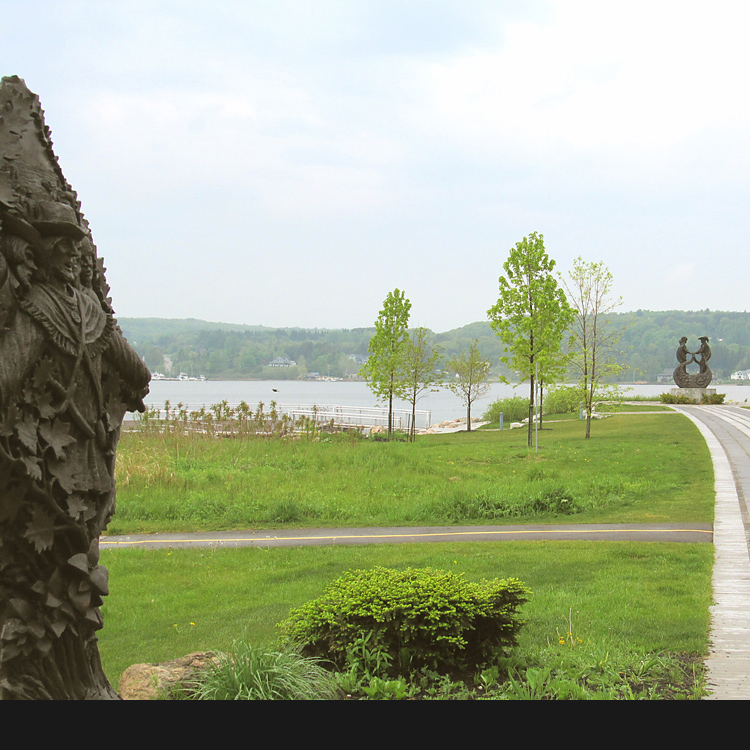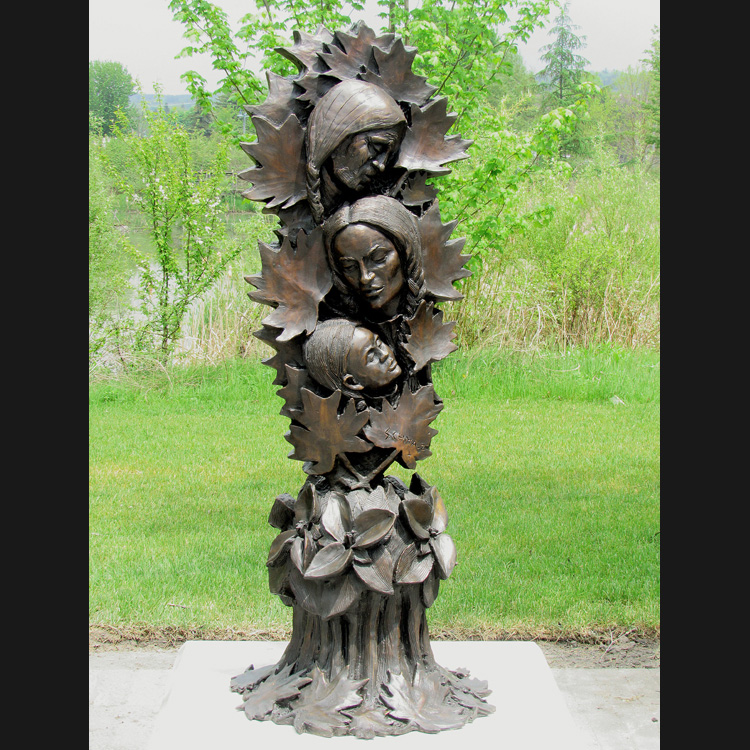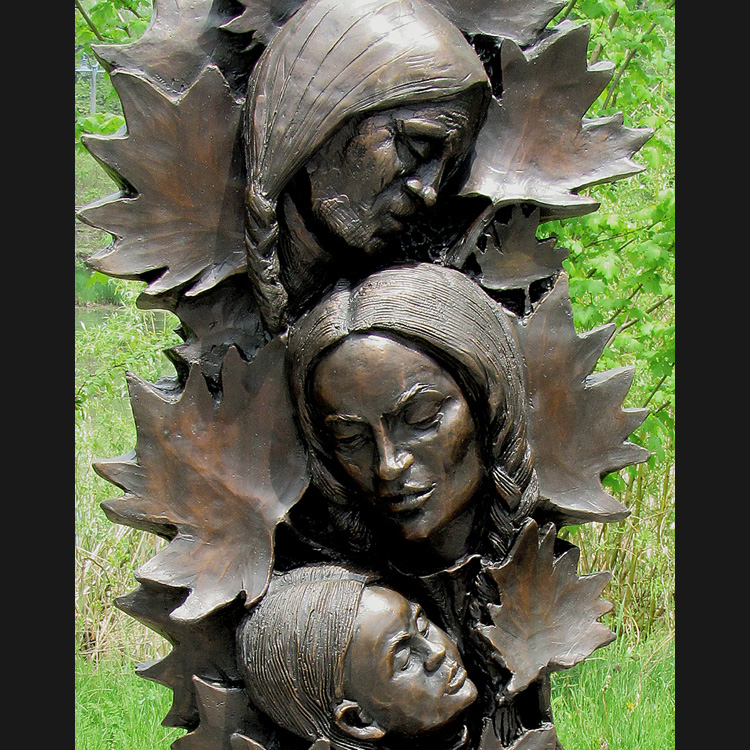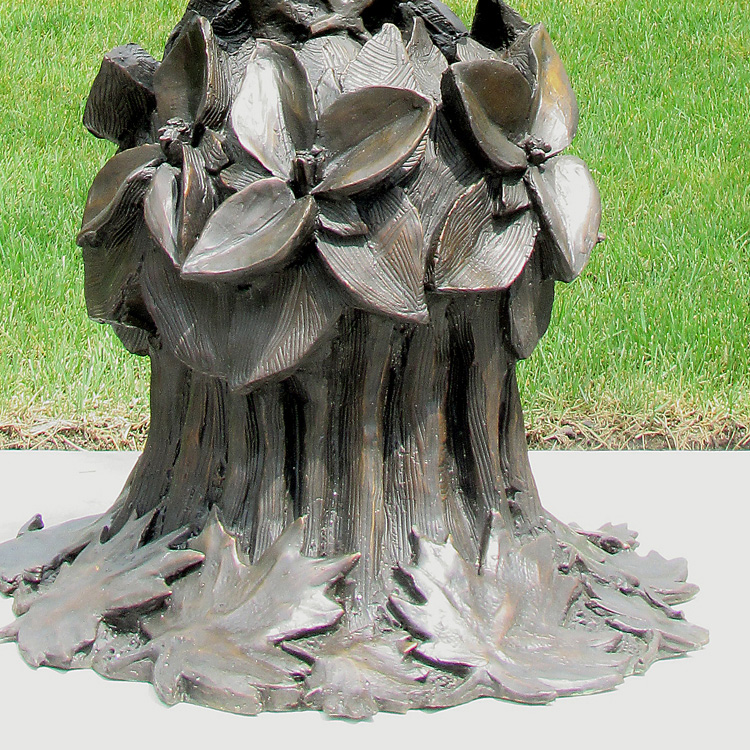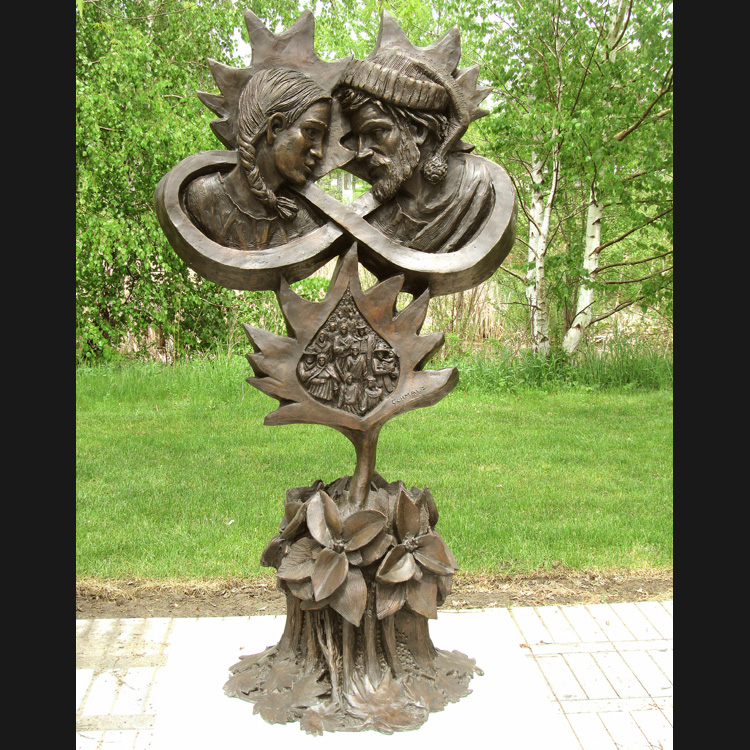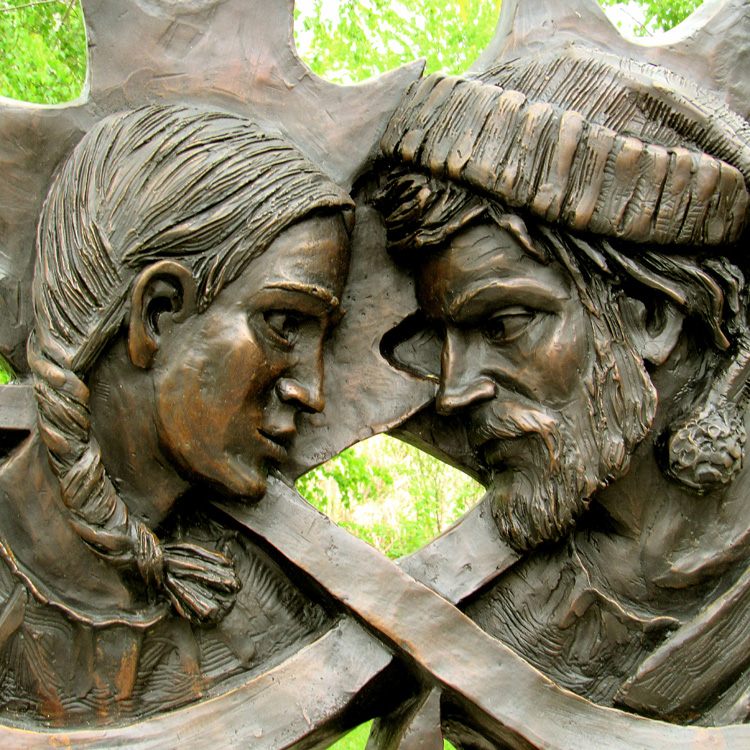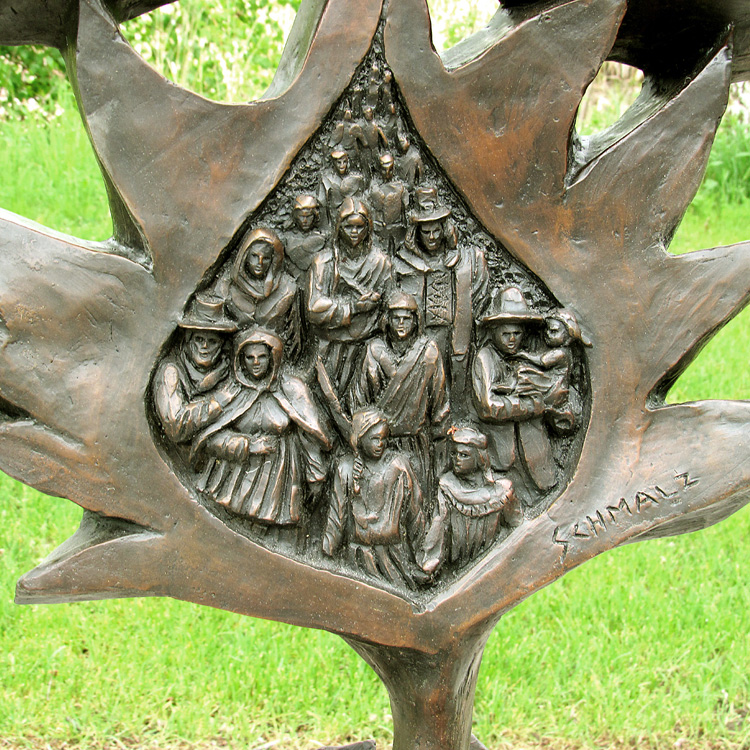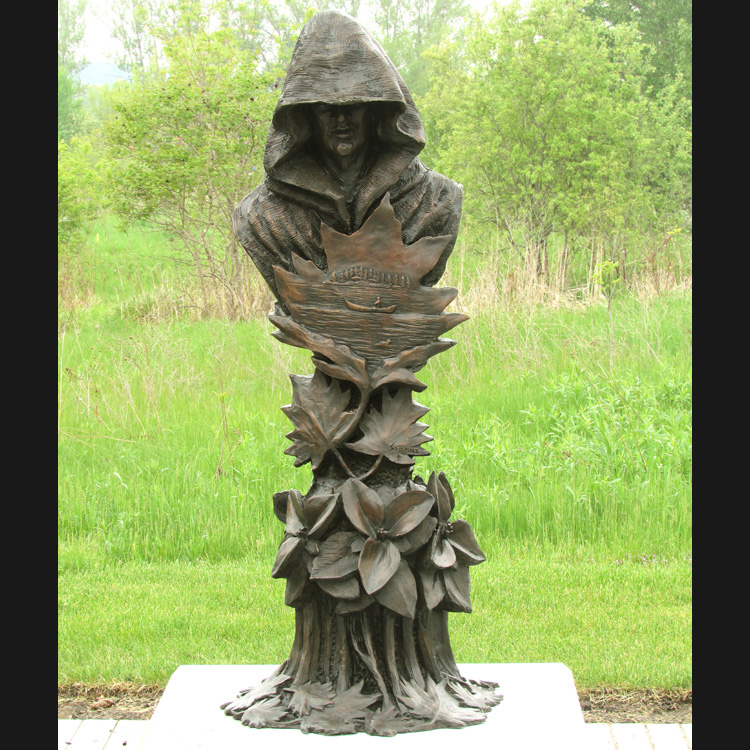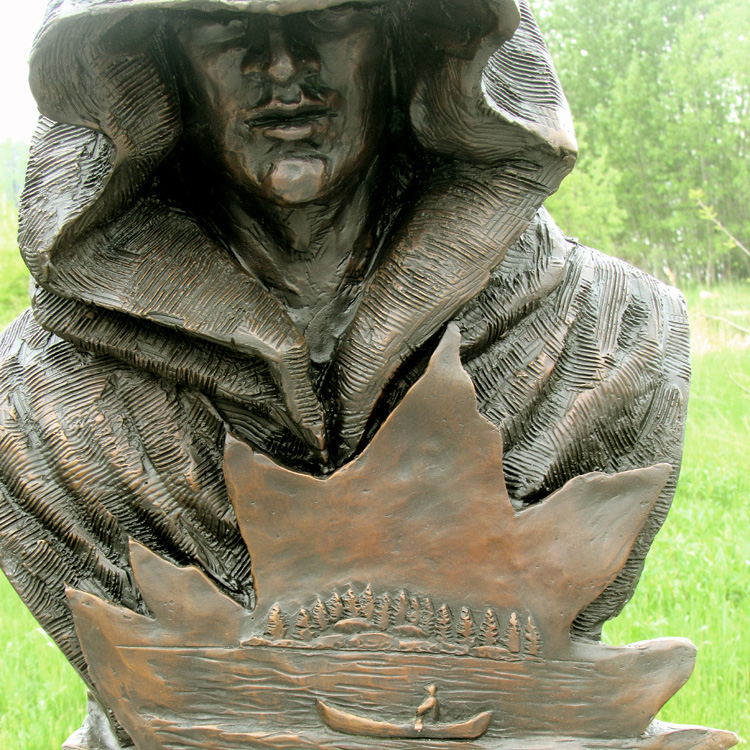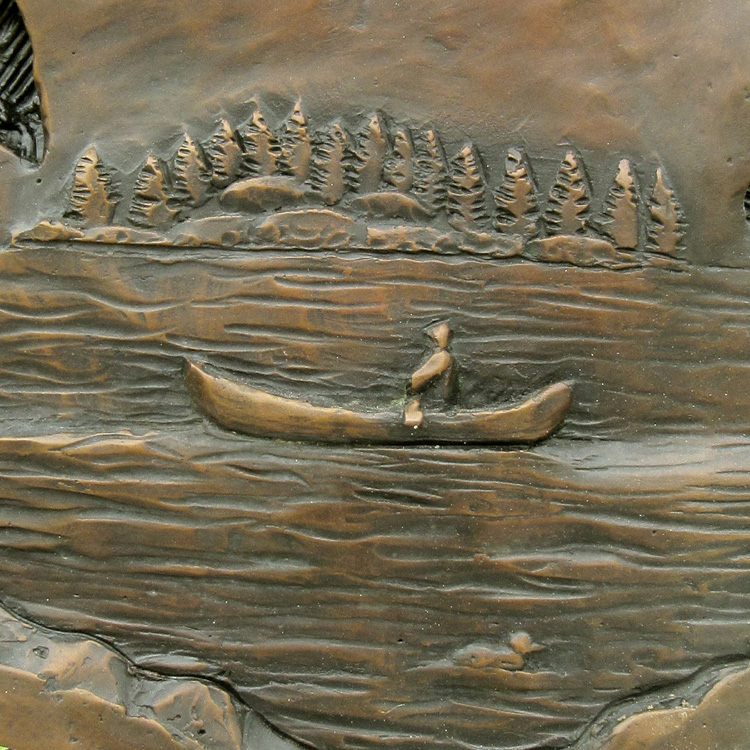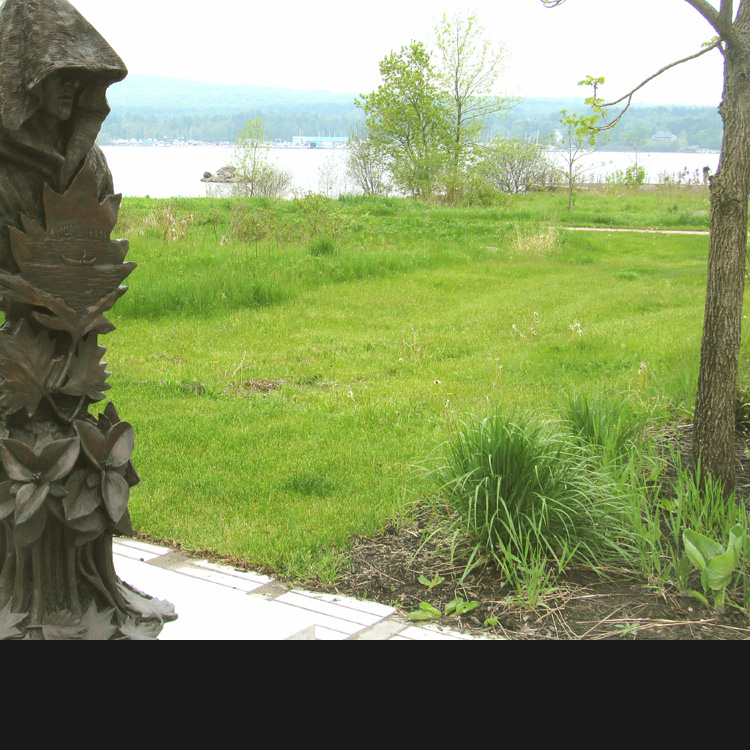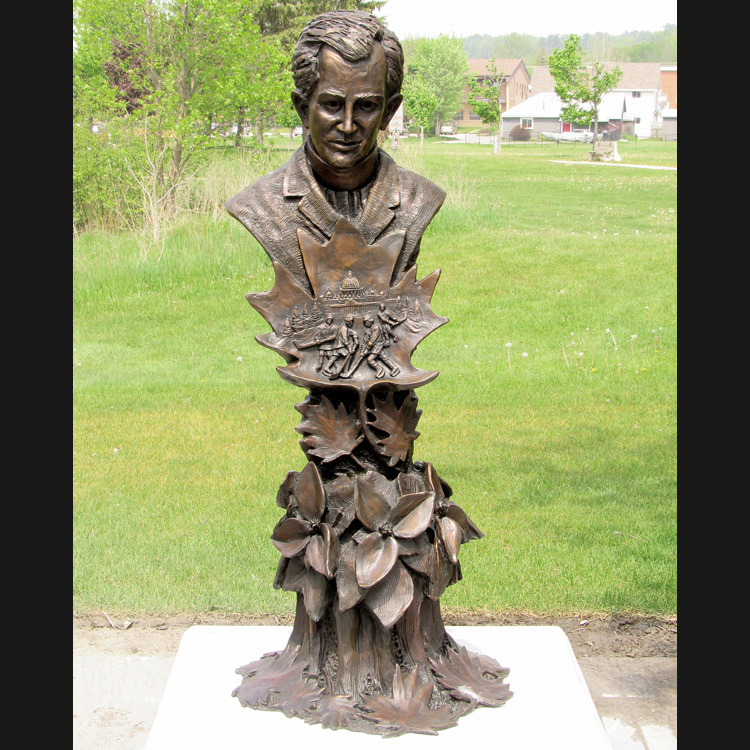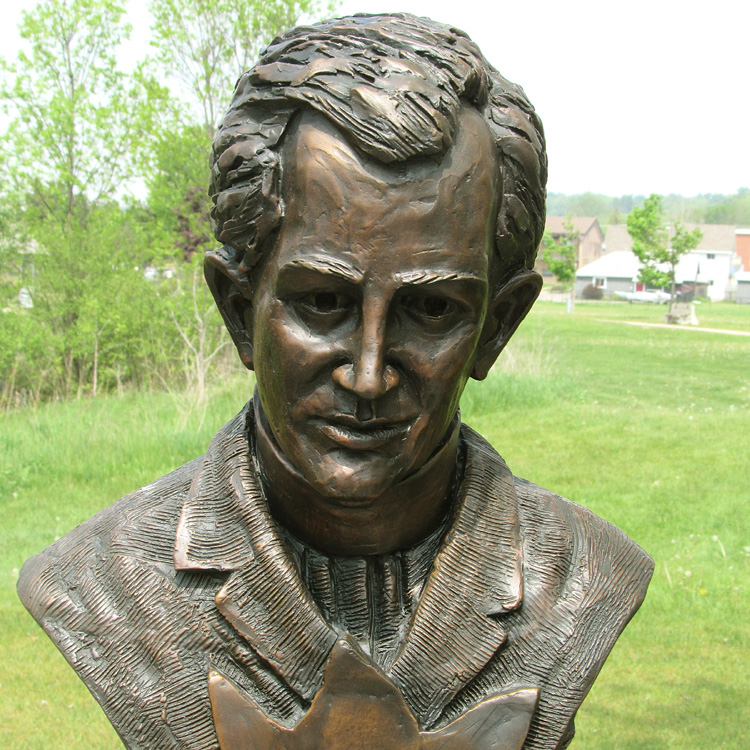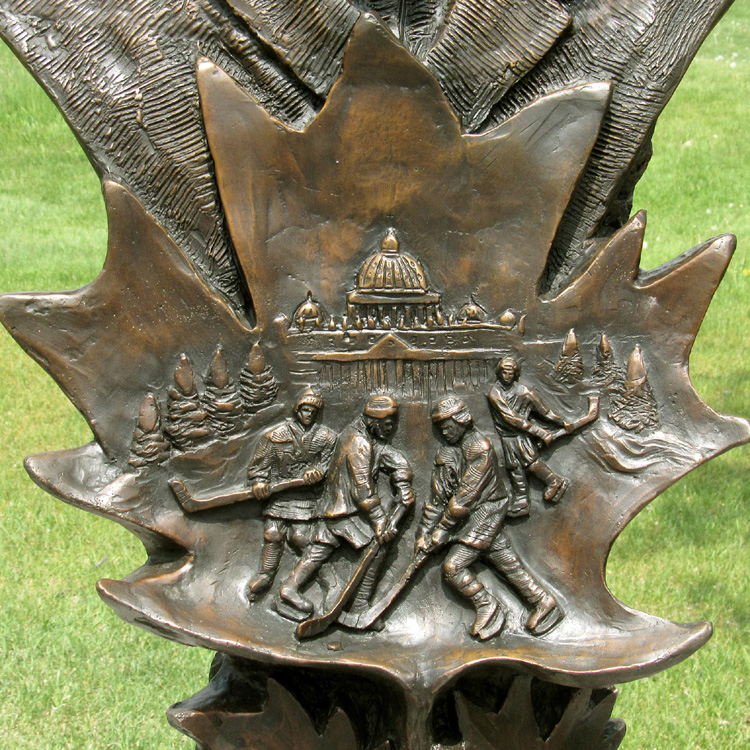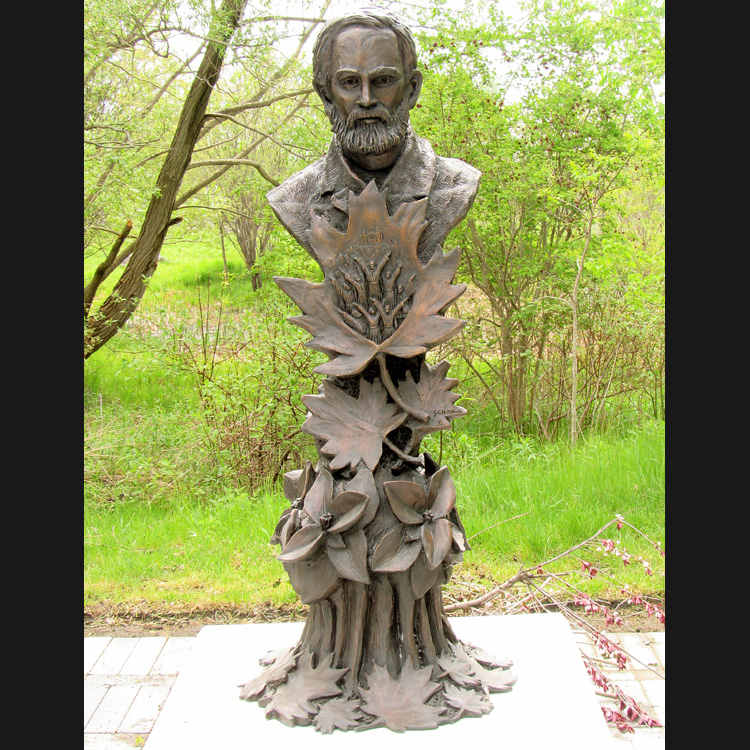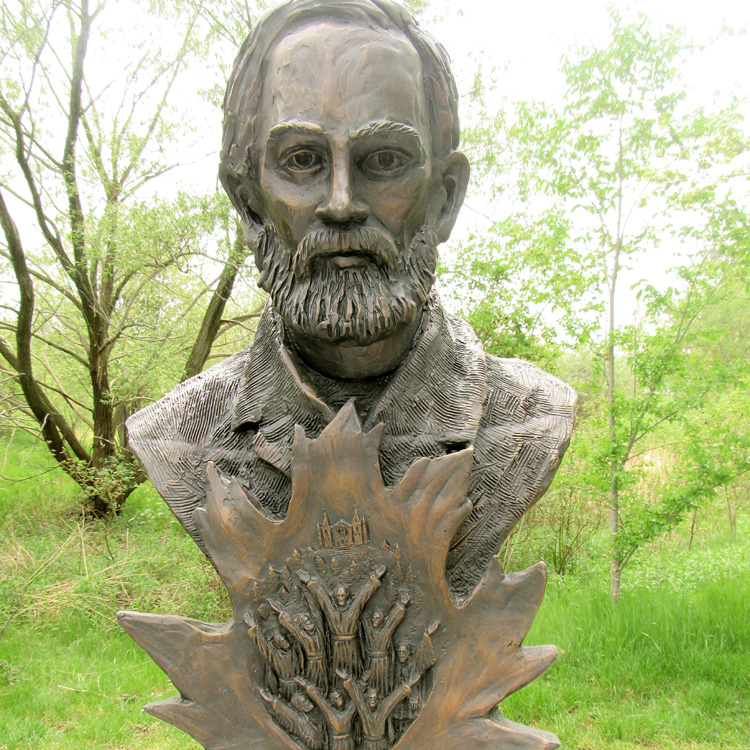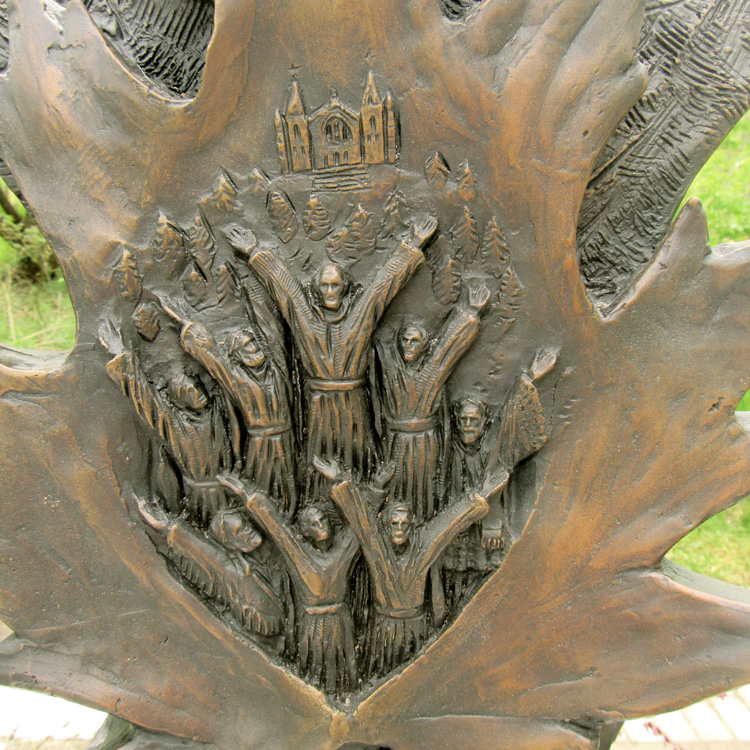Champlain Legacy Sculpture Park
Champlain’s Legacy Sculpture Project
“On August 1, 1615, French explorer Samuel de Champlain arrived on the shores of Georgian Bay in the region of what is now Penetanguishene, Ontario Canada. During his travels, Champlain established a strong alliance with the area’s Indigenous peoples and later published important descriptions of the people, societies and landscapes of what would become Ontario. This sculpture project in Champlain’s Legacy Park, Penetanguishene, Ontario, commemorates this piece of Canadian history.
The Meeting
The Meeting statue is a celebration of two people, two faiths and two distinct cultures coming together 400 years ago. In 1615, Chief Aenon of the Huron Wendat presents the Wampum belt, a symbolic gesture of friendship and alliance to welcome Samuel de Champlain and the French people to their land. Beneath the two figures are sculpted symbols from both cultures. Under the Chief the artist highlights the belief held by the Huron Wendat that the world is a large turtle. On this turtle live their people. Also represented are the three Sisters, the spiritual providers of what sustains their people, sister corn, sister bean and sister squash. Beneath Champlain lie the symbol of the French, emerging from their ship, the ancient symbol of the Fluer de lis. Also included are the Christian symbols of God, represented in three parts, the Father by the hand, the son Jesus by the fish, and the Holy Spirit, the dove. A ribbon of Maple leaves continually flows throughout the sculpture, symbolic of our shared nation and the Huron Wendat belief that all meetings never end. The Meeting statue is symbolic in itself of the two cultures embracing on the shores of Georgian Bay and their woven history to the area. The artist captured the 400 years of history by using 400 leaves throughout the piece.
The park’s Legacy Walkway also features six other sculptures by Tim portraying individuals and peoples significant to the history of Ontario and Canada.
Etienne Brule (1592-1633)
The first European appeared in the Penetanguishene area around 1610. Samuel de Champlain, governor of New France, dispatched eighteen-year-old Etienne Brule a “coureur de bois” (French Voyageur) to explore Georgian Bay. Brule travelled from Quebec to learn the ways and language of the Huron-Wendat Nation and establish fur-trading contacts from Penetanguishene to Quebec. Brule’s youth, bravery and adventurous outlook contributed to his discovery of three (and possibly all five) of the Great Lakes and helped established French roots in Penetanguishene. Brule became the first permanent French representative in this region, and adopted some of the aboriginal customs that suited him. In 1629 while war was waging between France and England, Brule betrayed Champlain, and guided the English fleet up the St. Lawrence River where the English and Iroquois captured Champlain and Quebec. It is speculated that Brule’s treason and other indiscretions caused the Huron-Wendat to turn on him, killing him in 1633.
The Wendat
In the early 1600s, the shores of Penetanguishene were the land of the Huron-Wendat Confederacy. The Huron-Wendat were a nation of farmers, hunters and traders who lived in large communal groups of up to two thousand people in several long houses. They were a matrilineal society who traced their descent and inheritance through the female line. The women were responsible for the majority of the farming which sustained the people as they grew three-quarters of their food. By 1615, the Huron-Wendat had forged a formal trade alliance with the French and befriended Champlain. The Huron-Wendat society would undergo profound change as a result of this relationship. Today the Huron Wendat live in Wendake near Quebec City.
The Métis
Prior to Canada becoming a nation, a new Aboriginal people emerged out of the relations of Native women and European men. The initial offspring of these unions were individuals of mixed ancestry who resulted in the beginning of a new Aboriginal people with a distinct identity and culture in west central North America – the Métis Nation. These Métis people were connected through the fur trade network, extensive kinship and a collective identity. In Ontario, historic Métis settlements emerged along the rivers and watersheds of the province, surrounding the Great Lakes and throughout to the northwest of the province. One of these settlements was a vibrant community in Huronia. In fact, Métis were among the region’s earliest settlers to Penetanguishene with the Drummond Island Migration of 1828 to 1829.
Joseph Le Caron (1586 – 1632)
Joseph Le Caron is one of four pioneer missionaries of Canada and the second European to land in Huronia. Born in 1586, Le Caron was a Catholic Priest who arrived in Huronia in 1615, shortly before Samuel de Champlain establishing a relationship the native Huron Wendat. On August 12, 1615, he held the first Catholic mass in Ontario at Carhagouha, just outside of present day Penetanguishene.
Athol Murray (1892 -1975)
Father Athol Murray, future member of the Order of Canada and Hockey Hall of Fame, came to St. Ann’s Church in Penetanguishene in 1918, shortly after his ordination. Father Murray was instrumental in the 300 year celebrations of the arrival of Samuel de Champlain that took place in 1921 known as the Old Home Week Celebrations, including a massive re-enactment and the erection of the Angels of Good Intentions at the entrance to town.
Fr. Laboureau (1837 – 1904)
Theophilus Francois Laboureau was born in 1837 in France and was appointed to St. Ann’s Church in Penetanguishene in 1873. He felt that his small church should be replaced with a fitting memorial church to commemorate the deeds of Canada’s heroic missionaries and deep history of Penetanguishene. For the next few years, Father Laboureau travelled through Europe securing funds to build St. Ann’s church. In 1886, the cornerstone was laid, and the “Cathedral of the North” was completed in 1902.



